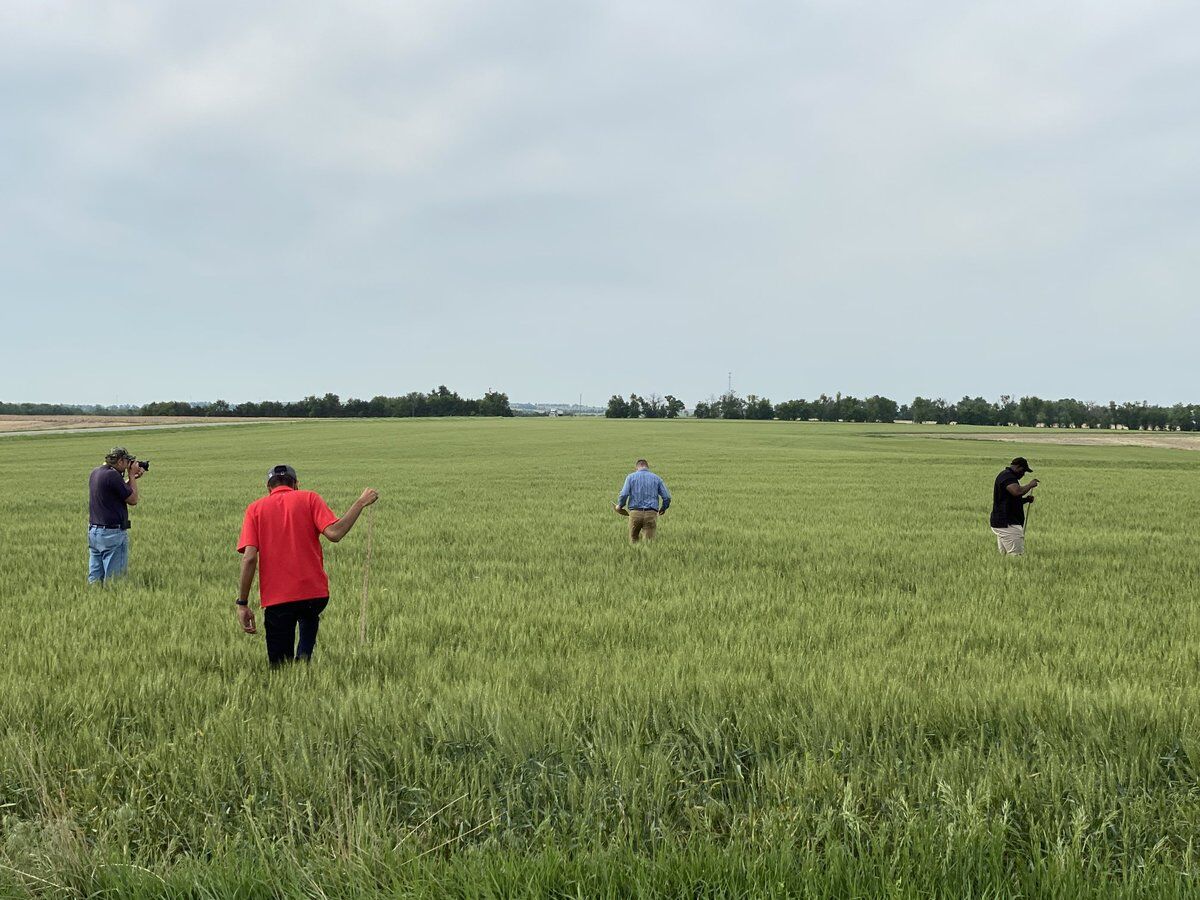The 2022 Wheat Quality Council’s Hard Winter Wheat Tour across Kansas wrapped up on May 19. During the three days of wheat scouting, tour participants traveled six routes from Manhattan to Colby to Wichita and back to Manhattan. This year’s tour hosted people from 24 U.S. states plus Mexico and Canada in 20 vehicles while traveling across the state.
The three-day average yield for the fields that were calculated was 39.7 bushels per acre. While an estimated 7.4 million acres of wheat were planted in the fall, the Kansas wheat crop varies in condition based on planting date and amount of moisture received. What Mother Nature has in plan for the wheat crop still remains to be seen, but the tour captures a moment in time for the yield potential for fields across the state.
The official tour projection for total production of wheat to be harvested in Kansas is 261 million bushels, indicating that tour participants thought abandonment might be higher than normal at 11%. This number is the average of estimated predictions from tour participants who gathered information from 550 fields across the state. Based on May 1 conditions, NASS predicted the crop to be higher at 271 million bushels, with a yield of 39 bushels per acre and abandonment at only 6%.
Overall, the Kansas wheat crop is spotty and short, but the eastern half of the state generally had better growing conditions than the western half.
On the first day of the tour, crop conditions started out above the tour average, but deteriorated as the groups made their way west from Manhattan to Colby.
“Our expectation was the conditions would continue to deteriorate as we moved toward the southwest part of the state. Those conditions were as expected,” said Romulo Lollato, Kansas State University wheat extension specialist. “Maybe the biggest surprise was as we moved east, how long it took for conditions to improve. Those harsh conditions extended well into south central Kansas.”
“The west part of south central Kansas was more affected by the drought than we expected,” he said. The sandier soils in south central Kansas cannot hold as much water as the soils in western Kansas. Even though the area received more moisture than southwest Kansas, the soils didn’t hold the water.
Another surprise of this year’s tour was the lack of disease pressure, especially wheat streak mosaic virus. Lollato also said there was little to no insect pressure of concern for reducing yield.
On Thursday, participants had their first opportunity to get their boots wet and see moisture in fields from recent rains in the southern and eastern parts of the state. Yields in this part of the state were better than what participants had seen earlier on the tour, averaging 55.2 bushels per acre.
For fields that have not yet headed out, scouts use an early season formula model to calculate the potential yield of the fields. For the fields that had already headed, attendees were able to use a late-season formula to calculate yields, based on number of wheat heads, number of spikelets and kernels per spikelet. These formulas are provided by USDA’s National Agricultural Statistics Service. The formulas do not take into consideration variables such as weed pressure, disease and pests. Tour scouts didn’t see much disease pressure this year with the drought conditions.
The USDA estimate for the Nebraska wheat crop is 36.9 million bushels, down from 41.2 from last year. The estimated yield average is 41 bushels per acre. The Colorado crop is estimated at 49.6 million bushels, down from 69.6 million bushels last year. The estimate is for an average of 31 bushels per acre across the state. Brad Erker, executive director of Colorado Wheat, estimated the crop at 40.1 million bushels, based on a yield of 28.6 bushels per acre, 1.4 million acres harvested and 30% abandonment rate. Oklahoma reported that the state’s production is estimated at 60 million bushels, down from 115 million bushels last year, with 25 bushels per acre yield.
These fields are still 3 to 6 weeks from harvest. A lot can happen during that time to affect final yields and production.
The tour is sponsored by the Wheat Quality Council, which is a coordinated effort by breeders, producers and processor to improve wheat and flour quality. Dave Green, executive director of the WQC, said there are several goals of the tour. The first is for participants to make connections within the wheat industry. Another is to “describe the wheat as well as we can at the current point in time, not knowing what will happen over the next few weeks.” A third goal is to highlight the agriculture industry.
For more information about what participants saw statewide, search #wheattour22 on Twitter.



